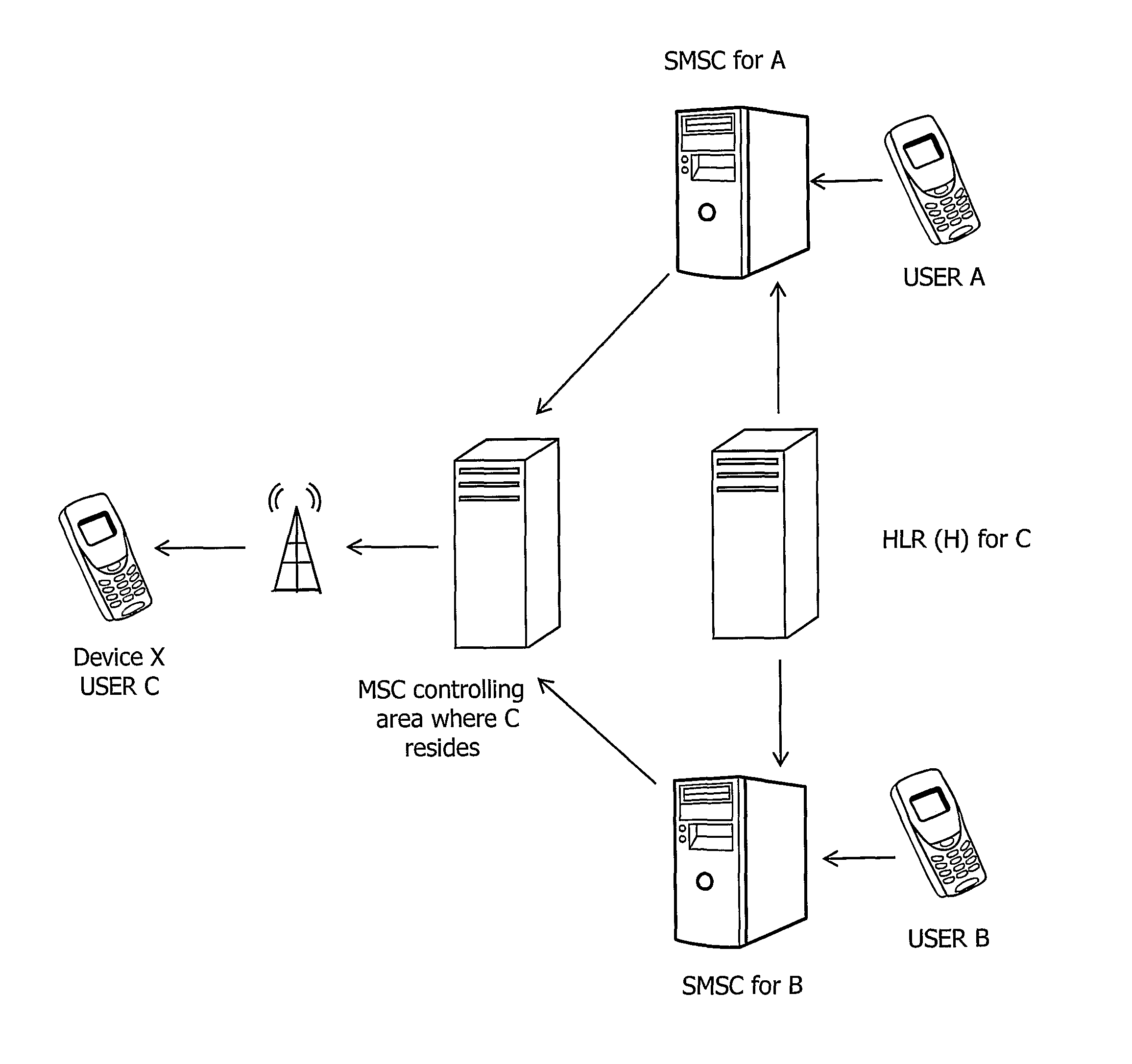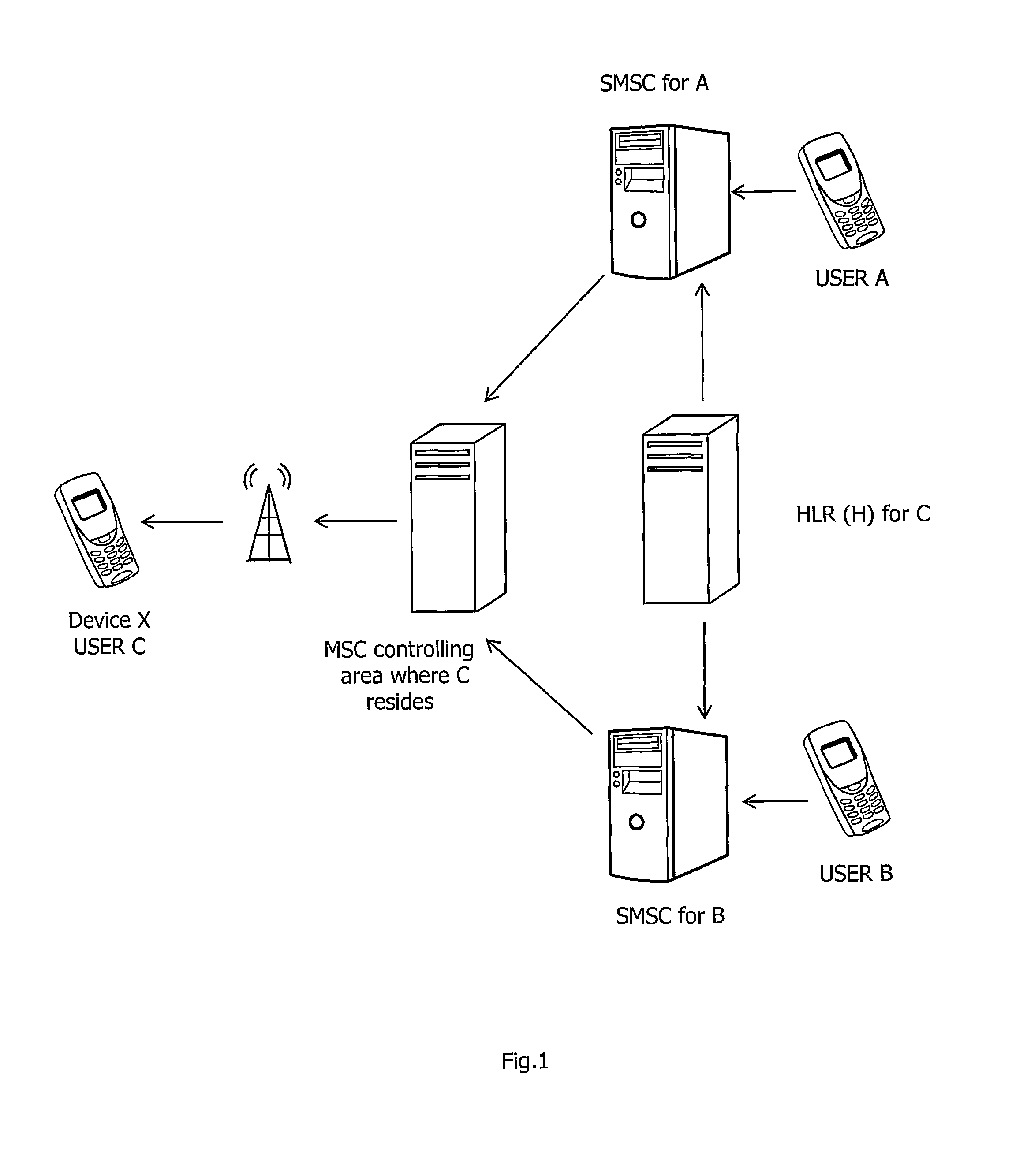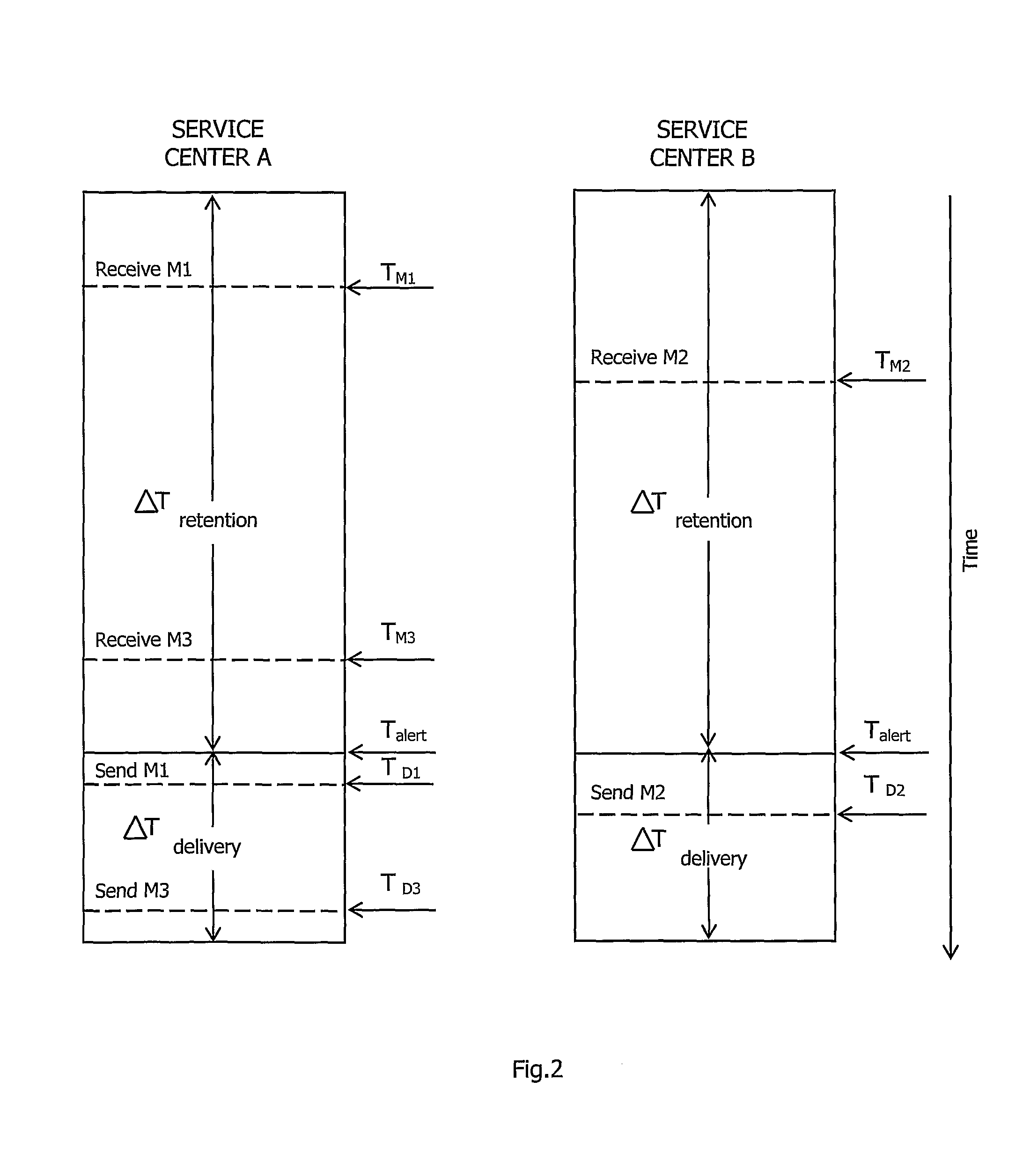Message delivery in mobile networks
a mobile network and message technology, applied in the field of message delivery in communication networks, can solve the problems of unsatisfactory user experience, messages may be delivered out of sequence, and traffic delivered by other operators will not be able to use recipient-based subscriber distribution, and traffic delivered by other operators will not be able to use central control functions
- Summary
- Abstract
- Description
- Claims
- Application Information
AI Technical Summary
Benefits of technology
Problems solved by technology
Method used
Image
Examples
Embodiment Construction
Brief Description of the Drawings
[0048]The invention will be more clearly understood from the following description of some embodiments thereof, given by way of example only with reference to the accompanying drawings in which:—
[0049]FIG. 1 is a block diagram showing subscriber mobile devices and network elements which deliver messages to them in accordance with the invention;
[0050]FIG. 2 is a diagram showing message delivery scheduling; and
[0051]FIG. 3 is a plot showing mapping functions.
DESCRIPTION OF THE EMBODIMENTS
[0052]The invention ensures that when a device comes on-line, messages are delivered in a synchronised manner by independent service centres at different locations. This is achieved without any centralised control, each service centre automatically determining delivery times for its messages without being aware of what other service centres are doing. The effect is that the messages from the different service centres are interleaved for synchronisation even though the ...
PUM
 Login to View More
Login to View More Abstract
Description
Claims
Application Information
 Login to View More
Login to View More - R&D
- Intellectual Property
- Life Sciences
- Materials
- Tech Scout
- Unparalleled Data Quality
- Higher Quality Content
- 60% Fewer Hallucinations
Browse by: Latest US Patents, China's latest patents, Technical Efficacy Thesaurus, Application Domain, Technology Topic, Popular Technical Reports.
© 2025 PatSnap. All rights reserved.Legal|Privacy policy|Modern Slavery Act Transparency Statement|Sitemap|About US| Contact US: help@patsnap.com



